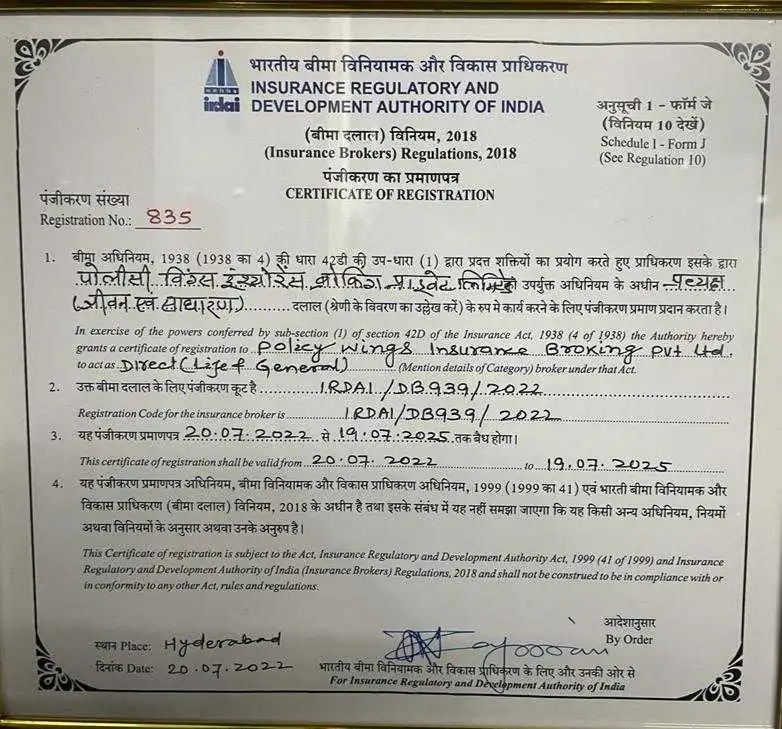The Importance of Critical Illness Cover in Health Insurance

Health insurance is an essential aspect of financial planning and risk management. It provides individuals and families with a safety net in times of medical emergencies, ensuring that the cost of healthcare doesn’t become a financial burden. While traditional health insurance policies cover a range of medical expenses, including hospitalization, doctor’s visits, and medication, there are specific situations where these policies may fall short. This is where critical illness cover comes into play.
What is Critical Illness Cover?
Critical illness cover, often referred to as critical illness insurance or CI insurance, is a specialized form of health insurance that is designed to provide financial protection when the policyholder is diagnosed with a severe, life-threatening illness.
Unlike traditional health insurance, which covers a wide range of medical expenses, critical illness cover offers a lump-sum payment upon the diagnosis of a covered condition. This lump sum can be used by the policyholder for various purposes, such as covering medical bills, paying off debts, or even making necessary lifestyle adjustments.
Critical illness cover is not meant to replace traditional health insurance but rather to complement it. It addresses a specific set of circumstances that are not typically covered by regular health insurance policies. The key features of critical illness cover include:
Lump-Sum Payment: When the policyholder is diagnosed with a covered critical illness, the insurance company provides a lump-sum payment. The amount of this payment is predetermined and specified in the policy. It is not dependent on the actual medical expenses incurred by the policyholder.
Covered Conditions: Critical illness cover typically includes a list of specific medical conditions that qualify for benefits. These conditions often include cancer, heart attack, stroke, organ transplant, kidney failure, and more. The exact list of covered conditions may vary among insurance providers.
Survival Period: Most critical illness policies have a survival period, which is a waiting period that the policyholder must survive after the diagnosis of a covered condition. This waiting period ensures that the illness is severe and long-lasting. If the policyholder passes away during this period, the benefit may not be payable.
No Restrictions on Usage: The lump-sum payment received from a critical illness policy can be used as the policyholder sees fit. It can cover medical expenses, replace lost income, pay off debts, or even fund necessary lifestyle changes, such as modifying one’s home to accommodate a disability.
Why Critical Illness Cover is Important
Critical illness cover plays a vital role in a comprehensive financial plan for several reasons:
Financial Protection: A critical illness diagnosis can have devastating financial consequences. Even with traditional health insurance, there may be significant out-of-pocket expenses, including deductibles, copayments, and non-covered treatments. Critical illness cover ensures that you have a substantial sum of money to cover these costs and maintain your financial stability.
Quality of Life: Beyond medical expenses, a critical illness can lead to lifestyle changes that require financial resources. For example, you may need to make your home wheelchair-accessible or hire a caregiver. The lump-sum payment from a critical illness policy can help you maintain your quality of life and independence.
Debt Management: Medical bills and related expenses can quickly accumulate, leading to debt. Critical illness cover can be used to pay off existing debts, such as mortgages, loans, or credit card balances, reducing the financial burden on you and your family.
Choice of Treatment: Having access to a lump-sum payment allows you to explore various treatment options, including experimental or out-of-network treatments that may not be covered by traditional health insurance. This flexibility can be crucial in critical illness cases.
Peace of Mind: Knowing that you have critical illness cover provides peace of mind to both you and your loved ones. It allows you to focus on your recovery without the constant worry of financial instability.
How Critical Illness Cover Works
To understand how critical illness cover works, let’s break down the key components of a typical policy:
Purchasing a Policy: To obtain critical illness cover, you need to purchase a policy from an insurance provider. The cost of the policy, known as the premium, is determined by various factors, including your age, health status, coverage amount, and the term of the policy.
Coverage Amount: You can choose the coverage amount when purchasing the policy. This amount represents the lump-sum payment you will receive if you are diagnosed with a covered critical illness. It’s important to select a coverage amount that aligns with your financial needs and goals.
Premium Payments: You are required to pay regular premium payments to keep the policy in force. The frequency of premium payments (e.g., monthly, quarterly, annually) and the premium amount will be outlined in the policy agreement.
Diagnosis of a Covered Condition: If you are diagnosed with a covered critical illness during the policy term and survive the specified survival period, you can make a claim with the insurance company. This claim will trigger the payment of the lump sum.
Lump-Sum Payment: Upon approval of your claim, the insurance company will provide you with a lump-sum payment, which you can use as needed to address your financial obligations and medical expenses.
Exclusions and Limitations: It’s crucial to thoroughly review your policy to understand any exclusions or limitations. Not all critical illnesses may be covered, and certain conditions or events may not qualify for a payout.
Policy Term: Critical illness policies typically have a specific term, which can range from a few years to several decades. You should choose a policy term that aligns with your long-term financial goals and needs.
Renewal and Conversion: Some critical illness policies offer the option to renew or convert the policy at the end of the term. Renewal allows you to extend the coverage, while conversion may allow you to convert the policy into another type of insurance, such as a whole life or term life policy.
Choosing the Right Critical Illness Cover
Selecting the right critical illness cover requires careful consideration of your individual circumstances and needs. Here are some factors to keep in mind when choosing a policy:
Coverage Amount: Determine the amount of coverage you need based on your financial obligations, such as outstanding debts, medical expenses, and potential lifestyle changes. It’s essential to strike a balance between adequate coverage and affordability.
Covered Conditions: Review the list of covered critical illnesses provided by the insurance company. Ensure that it includes conditions that are relevant to your age, family history, and overall health.
Survival Period: Understand the survival period specified in the policy. This waiting period can vary among insurers and policies. Choose a policy with a survival period that aligns with your preferences and financial capabilities.
Premiums: Consider the cost of premiums and how they fit into your budget. Be aware that premiums can increase with age, so factor in potential future premium adjustments when planning.
Policy Term: Select a policy term that aligns with your long-term financial goals. If you anticipate needing coverage for an extended period, opt for a policy with a longer term.
Exclusions: Read the policy carefully to identify any exclusions or limitations. Understand what conditions or circumstances may not be covered by the policy.
Provider Reputation: Research the insurance provider’s reputation and financial stability. Choose a reputable company with a history of prompt claims processing and good customer service.
Additional Riders: Some insurers offer optional riders that can enhance your critical illness cover. These riders may include coverage for additional conditions or benefits such as premium waivers in case of disability. Evaluate whether any riders align with your needs.
Seek Professional Advice: Consider consulting with a financial advisor or insurance agent who specializes in critical illness insurance. They can provide personalized guidance based on your unique situation.
Wrapping Up
Critical illness cover in health insurance is a valuable tool that provides financial protection and peace of mind in the face of severe medical conditions. It complements traditional health insurance by offering a lump-sum payment upon the diagnosis of covered critical illnesses. This lump-sum payment can be used to cover medical expenses, manage debts, maintain your quality of life, and make necessary lifestyle adjustments.
When choosing a critical illness policy, it’s essential to carefully consider factors such as the coverage amount, covered conditions, premiums, policy term, and any exclusions or limitations. By selecting the right policy for your needs, you can ensure that you and your loved ones are financially secure in the event of a critical illness diagnosis. Remember that critical illness cover is an investment in your future well-being, providing you with the resources you need to focus on recovery and healing when it matters most.
Related Posts
FAQs
A root canal is a dental procedure designed to remove infected or damaged pulp from a tooth, clean and disinfect the interior, and seal it to prevent further infection.
A root canal is necessary when the pulp inside a tooth becomes infected or inflamed due to decay, trauma, or other factors. If left untreated, it can lead to severe pain and potential tooth loss.
Common signs include severe toothache, sensitivity to hot or cold temperatures, swelling of the gums or face, and a pimple-like bump on the gum near the affected tooth.
Yes, there are various types of root canals, including conventional root canals, apicoectomy, pediatric root canals, non-surgical retreatment, and regenerative endodontics, each tailored to specific dental conditions.
Modern root canal procedures are typically performed under local anesthesia, ensuring that patients do not feel pain during the treatment. Afterward, some discomfort is common but can usually be managed with over-the-counter pain relievers.








